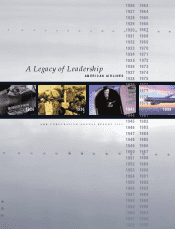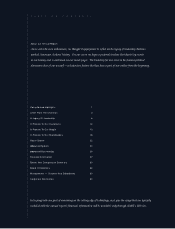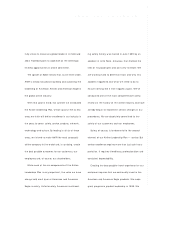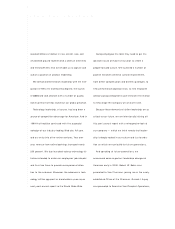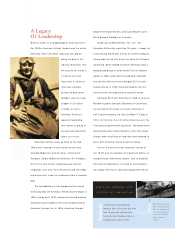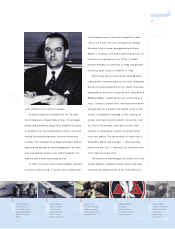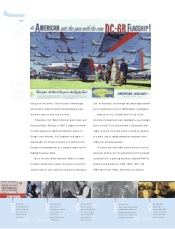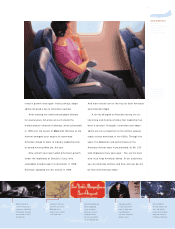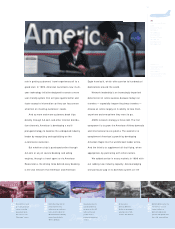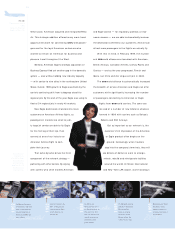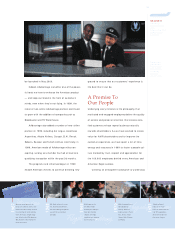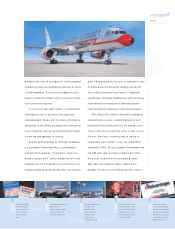American Airlines 1999 Annual Report Download - page 10
Download and view the complete annual report
Please find page 10 of the 1999 American Airlines annual report below. You can navigate through the pages in the report by either clicking on the pages listed below, or by using the keyword search tool below to find specific information within the annual report.
flying with the airline. Over the years, AAdvantage
continued to lead the industry by developing more
and more ways to earn and use miles.
Throughout the 1980s, American grew larger and
more profitable. Starting in 1985, it began to extend
its reach beyond its traditional domestic system to
Europe, Latin America, the Caribbean and Japan. It
also brought air service to smaller U.S. communities
through the development of a regional feeder carrier
dubbed American Eagle.
But in the late 1980s and early 1990s, a number
of factors combined to reprise the kind of turmoil the
industry had not seen since the early days of deregula-
tion. At American, the average cost advantage created
by the rapid growth of the 1980s began to disappear.
Because of this, Crandall and the rest of the
American management team developed a new strategic
plan to invest in the airline where it could grow prof-
itably, to shrink the airline where it could not operate
at a profit, and to rapidly expand the company’s prof-
itable non-airline businesses.
The early and mid-1990s were a difficult time for
American Airlines, but the adjustments of that period,
combined with a growing economy, enabled AMR to
produce record profits in 1995, 1996, 1997, and
1998. By the late 1990s, American was ready to
8
M D-11
Manufacturer:
McDonnell-Douglas
(USA)
Number in Fleet: 11
Number of Seats:
238/255
With more powerful
engines, a pressurized
cabin and air condi-
tioning, the DC-6 —
which American
introduced in 1947
— was a favorite
among passengers.
1932
1933
1934
1935
1936
Newly introduced
Curtiss Condors
afford improved comfort
for passengers, who
are served by
American Airways’ first
stewardesses.
An early fare-
discounting initiative
called the “ Air Scrip
Plan” will evolve in
1934 into the Air
Travel Plan.
A reorganized and
renamed American
Airlines, with C.R. Smith
at the helm, emerges
from the controversy
over government
airmail contracts.
The success of a
flight-tracking system, developed
by American’s Glen Gilbert for
Chicago flights, will serve as
the nucleus for the nation’s first
air-traffic control system.
Fast and reliable
Douglas DC-3s,
inspired by C.R. Smith,
revolutionize air travel
as they begin flying
American’s routes.

